Getting Started Siemens
Open Automation Software Tags can be defined to connect directly to Siemens controllers with the built in Siemens Driver Interfaces which support communications over Ethernet to S7-200, S7-300, S7-400, S7-1200, and S7-1500.
Step 1 – Check Siemens License

Start Configure OAS application from the program group Open Automation Software.
Select Configure-License and verify that Siemens is one of the available Drivers in the lower left of the form. If you do not see Siemens driver available contact support@oasiot.com to update your license.

NOTE: To configure remote OAS Engines enter the IP Address or node name in the Network Node field and click on Select.

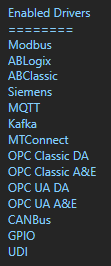
Note: You will need to be running Open Automation Software Version 8.0.0.10 or greater to support direct Siemens communications. You can download the latest version from our downloads page.
Step 2 – Configure Siemens Driver
Select Configure-Drivers.

Enter a meaningful Driver Interface Name that you will refer to this physical connection when defining Tags with a Siemens Data Source.

Set the Driver type to Siemens.
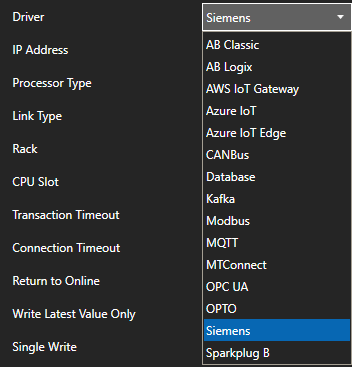
Define the IP Address of the controller to interface with.

NOTE: When connecting to a S7-200 append the TSAP Local and Remote to the IP Address. Ex: 192.168.1.1.1000,1000. Here is a link to the Siemens Documentation on TSAP: https://support.industry.siemens.com/tf/ww/en/posts/is-tsap-hard-to-understand/26160/?page=0&pageSize=10#top
Select the Processor Type for the controller.
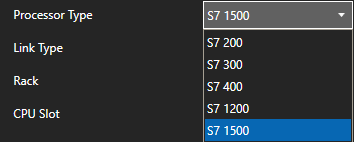
Select the Link Type.

Set the Rack and CPU Slot number.

Optionally define a secondary failover of controller if the primary controller fails with the property Enable Failover.
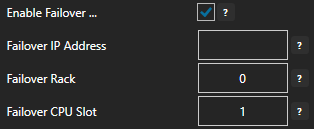
If both the primary and secondary controllers are offline the Return to Online settings determines the retry frequency.
View Driver Interface Failover for more information and and video demonstrating communications failover.
Select the Add Driver button above the Driver list in the left pane to add the Driver Interface as an available selection when defining Tags in the next step.

NOTE: If you need to define several Driver Interfaces you can use the CSV Export and CSV Import on the toolbar in the upper right together with Microsoft Excel.

Drivers can also be programmatically assigned with the OAS REST API or .NET Server Configuration interface.
Step 7 – Configure Siemens Tags
Select Configure-Tags.

Select Add Group to add a group to place tags in.

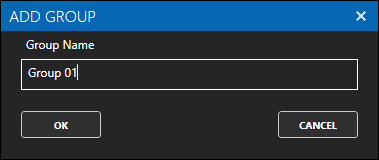
NOTE: You can add organizational Groups as many levels deep as you prefer and add tags to groups. To do this first add a Group to the root level, then right click on the Group in the right window to add additional Groups or Tags.
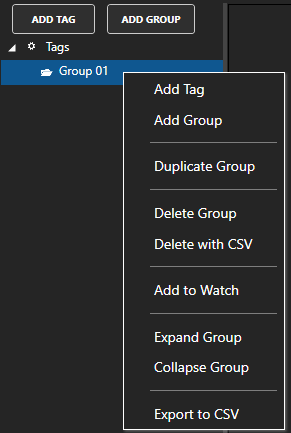
Select Add Tag to add a tag to the group selected.

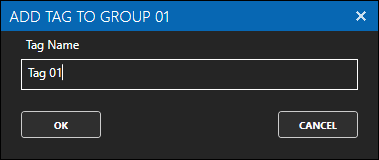
Change the Data Source Tag property to Siemens.
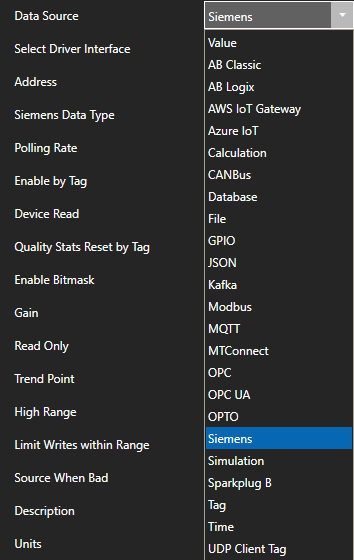
Select the correct Driver Interface from the Driver Interface pull down list.

Specify the Address of the variable to access.

See Siemens Address Syntax how to define memory addresses.
Example: DB1.DBD1 would be used to access a single float variable from data block 1.
Select the correct Siemens Data Type.
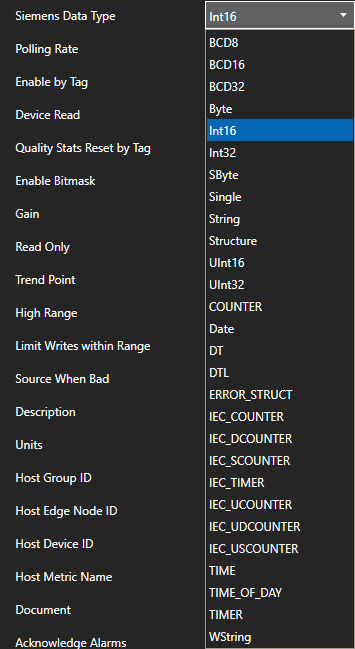
Specify the desired Polling Rate for the Tag.

To disable communications to the device you can use Enable by Tag to control when communications is active. Leave this property disabled to establish communications at all times.

The Device Read property can be used to disable continuous polling and request data on event from the transition from false to true of a value of a Boolean tag. Leave this property disabled to establish communications at all times.

Select Apply Changes to make the changes active on the tag.

Check that the data quality of the tag is Good Quality and the value from the device is returned.

If the data quality is ![]() view Troubleshooting Siemens Bad Data for solutions to common errors.
view Troubleshooting Siemens Bad Data for solutions to common errors.
Note: If error code 0x00000005 – Address does not exist or is out of range is returned as a System Error uncheck Optimized block access attribute of dbOptimized in the controller program and re-compile and upload to the controller.
To define multiple tags use the CSV Export and CSV Import on the toolbar together with Microsoft Excel.

When exporting tags choose which columns to include in the CSV file. There are over 800 properties available for use in each tag and reducing the amount of data can help to focus on the properties of interest.
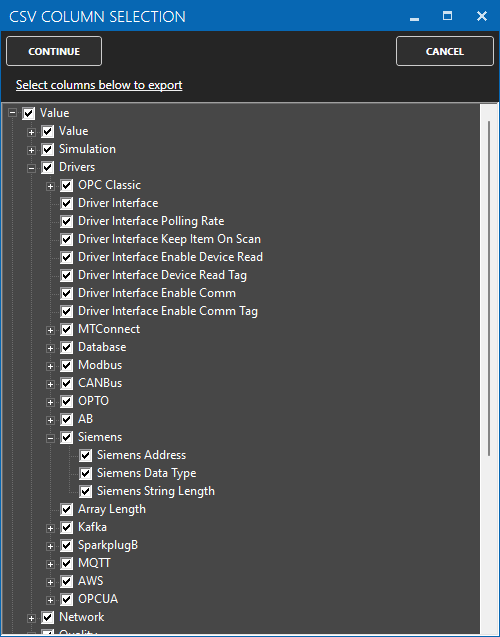
NOTE: Tags can also be programmatically assigned with the OAS REST API or .NET Server Configuration interface.
Step 4 – Save Siemens Tags and Drivers
Select the Save button on the toolbar at the top.

Enter a file name to be saved in C:\ProgramData\OpenAutomationSoftware\ConfigFiles directory on Windows or ConfigFiles subdirectory on Linux.
When prompted to set the file as the default configuration to load on startup select Yes.

The tags defined are now ready for use in all OAS features like Data Logging, Data Route, and Open UIEngine.

